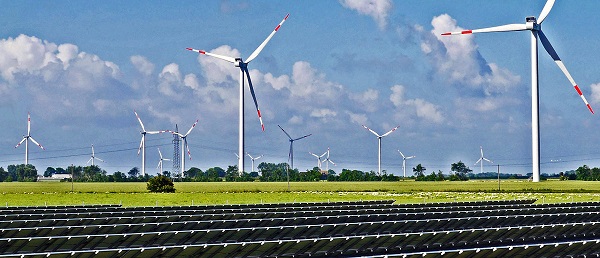Energy
Why are Western Canadian oil prices so strong?

 By Rory Johnston for Inside Policy
By Rory Johnston for Inside Policy
While Canadian crude markets are as optimistic as they’ve been in months regarding US tariffs, the industry is still far from safe.

Western Canadian heavy crude oil prices are remarkably strong at the moment, providing a welcome uplift to the Canadian economy at a time of acute macroeconomic uncertainty. The price of Western Canadian Select (WCS) crude recently traded at less than $10/bbl (barrel) under US Benchmark West Texas Intermediate (WTI): a remarkably narrow differential (i.e., “discount”) for the Canadian barrel, which more commonly sits around $13/bbl but has at moments of crisis blown out to as much as $50/bbl.
Stronger prices mean greater profits for Canadian oil producers and, in turn, both higher royalty and income tax revenues for Canadian governments as well as more secure employment for the tens of thousands of Canadians employed across the industry. For example, a $1/bbl move in the WCS-WTI differential drives an estimated $740 million swing in Alberta government budget revenues.
Why are Canadian oil prices so strong today? It’s due to the perfect storm of three distinct yet beneficial conditions:
- Newly sufficient pipeline capacity following last summer’s start-up of the Trans Mountain Expansion pipeline, which eliminated – albeit temporarily – the effect of egress constraint-driven discounting of Western Canadian crude;
- Globally, the bolstered value of heavy crudes relative to lighter grades – driven by production cuts, shipping activity, sanctions, and other market forces – has benefited the fundamental backdrop against which Canadian heavy crude is priced; and
- The near elimination of tariff-related discounting as threat of US tariffs has diminished, after weighing on the WCS differential to the tune of $4–$5/bbl between late-January through early March.
We break down each of these factors below.
A quick primer: differentials, decomposed

Before we dive in, let’s quickly review how Canadian crude pricing works. WCS crude is Canada’s primary export grade and is virtually always priced at a discount to WTI, the US benchmark for oil prices, for two structural reasons outlined below. More accurately referred to as the differential (in theory, the price difference could go both ways), this price difference is a fact of life for Canadian crude producers and sits between $11–$15/bbl in “normal” times. Over the past decade, WCS has only sported a sub-$10/bbl differential less than 10 per cent of the time and most such instances reflected unique market conditions, like the Alberta government’s late-2018 production curtailment and the depths of COVID in early 2020.

The structurally lower value of WCS relative to WTI is driven by two main structural factors: quality and geography.
First and very simply, WCS is extremely heavy oil – diluted bitumen, to be specific – in contrast to WTI, which is a light crude oil blend. Furthermore, WCS has a high sulphur content (“sour,” in industry parlance) compared to the virtually sulphur-free WTI (“sweet”). WCS crude requires specialized equipment to be effectively processed into larger shares of higher-value transportation fuels like diesel as well as the remove the sulphur, which is environmentally damaging (see: acid rain)l; so, WCS is “discounted” to reflect the cost of that additional refining effort. Quality-related discounting typically amounts to $5-$8/bbl and can be seen in its pure form in the price of a barrel of WCS is Houston, Texas, where it enjoys easy market access.

Second, Western Canadian oil reserves are landlocked and an immense distance from most major refining centers. Unlike most global oil producers that get their crude to market via tanker, virtually all Canadian crude gets to end markets via pipeline. So, this higher cost of transportation away from where the crude is produced (aka “egress”) represents the second “discount” borne by the relative price of Canadian crude, required to keep it competitive with alternative feedstocks. Transportation-related discounting typically amounts to $7-$10/bbl and can be seen in the difference between the price of a barrel of WCS in the main hub of Hardisty, Alberta and the same barrel in Houston, Texas.

Moreover, transportation-related discounting is worse when pipeline capacity is insufficient, which has so frequently been the case over the past decade and a half. When there isn’t enough pipeline space to go around, barrels are forced to use more expensive alternatives like rail and that adds at least another $5/bbl to the required industry-wide pricing discounting – because prices are always set at the margin, or in other words by the weakest barrel. In especially acute egress scarcity, the geographic-driven portion of the differential can blow out, as we saw in late-2018 when the differential rose to more than $50/bbl before the Alberta government forcibly curtailed provincial production to reduce that overhang.
Additionally, the election of US President Donald Trump – and, specifically, the threat of US tariffs on Canadian exports – has introduced a third factor in the differential calculation. Over the past few months, shifts in the WCS differential have also been reflecting the market’s combined handicapping of (i) the probability of tariffs hitting Canadian crude and (ii) the rough share of the tariff burden borne by Canadian exporters.
All three of these factors – global quality, egress availability, and market anticipation of tariff US risk – have shifted decisively and strongly in favour of WCS over the recent weeks and months.
More pipelines, fewer problems

The first reason that Canadian oil prices are remarkably strong at the moment is sufficient pipeline capacity. The perennial bugbear of Western Canadian oil producers, pipeline capacity is, quite unusually, sufficient thanks to last summer’s start-up of the Trans Mountain Expansion Project (TMX). TMX is the largest single addition to Western Canadian egress capacity in more than a decade and, since TMX entered service last summer, the transportation-related differential has remained low and stable, eliminating the largest and most common drag on Canadian crude pricing.
Without TMX, the Western Canadian oil industry would be suffering an all too familiar and increasingly acute egress crisis. Acute egress shortages would have dwarfed the threat of US tariffs and pushing differentials, in stark contrast to today, far wider – the spectre of provincial production curtailment would not have been out of the question. And it is also important to note that this pipeline sufficiency is inherently temporary. Current pipeline sufficiency will likely only last another year or two at most and then Western Canadian egress will require additional expansions to avoid the resurrecting of egress-scarcity-driven differential blowouts.
Heavy is the crude that wears the crown

The second reason that Canadian oil prices are remarkably strong now is the unusually strong global market for heavy crude. Heavy crude grades (e.g., Iraqi Basra Heavy and Mexican Maya), medium crude grades (e.g., Dubai and Mars), and high sulphur fuel oil (used in global shipping) have all seen their value rise relative to Brent and WTI benchmarks, which both reflect lighter, sweet grades of crude.
For WCS, the differential has narrowed from more than $10/bbl at the end of 2023 to around $2.8/bbl under WTI. The bolstered value of heavy crudes relative to lighter grades is being driven by a host of factors including ongoing OPEC+ production cuts (much of which came in the form of heavier crude grades), strong shipping activity, and tighter sanctions against traditional suppliers of heavy shipping fuel like Russia and more recently Venezuela.
What tariff threat?

Finally, the most acute and volatile reason that Canadian oil prices are remarkably strong at the moment is the near elimination of US tariff-related discounting. The US imports more than half of its total foreign oil purchases from Canada and Canadian crude has long enjoyed tariff-free access to the US market. Tariff-related pricing pressure began in earnest in late-2024 as Canadian crude markets tried to build in an ever-evolving handicapping of that tariff risk following Trump’s initial tariff threats. Tariff-related discounting grew stronger from mid-January through February with the excess geographic WCS differential rising to nearly $5/bbl (see chart above and read “Canadian Crude Drops Tariff Discount” for more on the logic of this measure).
After a months-long rollercoaster of “will he/won’t he” uncertainty around the imposition of US tariffs on Canadian crude imports, USMCA-compliant exemptions and broader US official chatter regarding potential outright Canadian crude exemptions have allowed markets to reduce the (roughly) implied probability to effectively zero. This factor alone narrowed the headline WCS differential in Hardisty, Aberta, by $3–$4/bbl over the past month.
Conclusion
Canadian oil prices are so strong today because just about everything that can be going right is going right. WCS differentials are benefitting from a perfect storm of (i) unusually sufficient pipeline capacity, (ii) exceptionally strong global heavy crude markets, and (iii) a near elimination of US tariff-related discounting. Together, these factors are lifting the relative value of Canadian crude oil exports, and this is a boon for Canadian oil industry profits, provincial royalty income, income tax receipts, and employment in the sector.
Looking ahead, WCS differentials may narrow by another dollar or two as this beneficial momentum persists. However, the balance of risk is now tilted towards a reversal (i.e., widening) of differentials over the coming year as OPEC+ begins to ease production cuts and Western Canadian production continues to grow without the hope of any new near-term pipeline additions. While Canadian crude markets are as optimistic as they’ve been in months regarding US tariffs, the industry is still far from safe – given the volatility of policy coming out of the White House, there is still a chance that this near-erasure of tariff risk from Canadian crude pricing may have come too far, too fast.
If and as tariff concerns fall away, egress sufficiency (i.e., pipeline capacity) will resume its place as king of the differential determinants. At the current rates of Western Canadian production growth, Canada is set to again overrun egress capacity – after the relief provided by the start-up of TMX – over the next year or two at most. While Canada may have dodged a near-term bullet to crude exports destined for the US, this situation serves to only emphasize the continued challenges associated with current pipeline infrastructure. It would be prudent for Canadian politicians to begin shifting their current concerns towards the structural, and entirely predictable, threat of renewed egress insufficiently coming down the pipe.
About the author
Rory Johnston is a leading voice on oil market analysis, advising institutional investors, global policy makers, and corporate decision makers. His views are regularly quoted in major international media. Prior to founding Commodity Context, Johnston led commodity economics research at Scotiabank where he set the bank’s energy and metals price forecasts, advised the bank’s executives and clients, and sat on the bank’s senior credit committee for commodity-exposed sectors.
Energy
Here’s a list of ways the Carney government can unshackle Canada’s energy sector

From the Fraser Institute
The Carney government recently unveiled its first list of projects under the recently enacted Bill C-5, officially dubbed the “Building Canada Act.” In practical terms, under Bill C-5, the prime minister will determine what projects are—or are not—in the “national interest.”
Not the expressed interest of the public, which may want to buy things delivered via such projects. Not the expressed interest of investors who want to pump money and productive activity into the Canadian economy. No, people such as Steven Guilbeault—former minister of Environment and Climate Change, current Carney cabinet member, and perhaps the person most responsible for creating Canada’s major-project building problem in the first place—will help Prime Minister Carney determine what “major projects” are in the “national interest.”
Bill C-5 allows cabinet to override existing laws, regulations and guidelines to facilitate investment and the building of projects such as pipelines, mines and power transmission lines. Or, as we have recently seen, choose not to facilitate them.
The Carney government’s first project list does not include a single oil or gas pipeline project. The government says this is because nobody in the private sector has proposed one, which is likely true—as Alberta Premier Danielle Smith has observed, the current regulatory environment deters investment. Indeed, only a fool would spend the money needed to even write up a formal project proposal relating to oil and gas production or transport in Canada right now. Canadian energy CEOs sent Carney an open letter saying much the same thing. To spur investment, Canada needs major regulatory reform not more fiat governance. The CEOs want government to simplify regulations, shorten timelines for project approval, commit to growing production, create fiscal frameworks to attract investment and find ways to gain aboriginal support for oil and gas projects. All nice words, but also, all too general.
So, in the interests of helping the government figure out what it might do with more specificity, here’s a list of “Bills/Acts that Could be Repealed or Neutered in the National Interest:”
Repeal/neuter the Tanker Ban Bill, (Bill C-48), which discourages investment in oil and gas export capacity in Canada. Repeal/neuter the cap on Canadian oil-and-gas-related greenhouse gas emissions, which deters investment in Alberta oil and gas. Repeal/neuter the regulations for methane emissions in the oil and gas sector, which will almost inevitably raise costs and curtail production. Repeal/neuter the EV mandate, another thinly-veiled initiative that would dissuade potential investors from producing fuels for use in internal combustion vehicles. (And no, the recent trivial “review” initiative by the prime minister doesn’t count as meaningful repeal.) Finally, Carney could repeal/neuter the Orwellian-named Clean Electricity Regulations, which investment in natural gas production.
Canada, as is now recognized on across the political spectrum, has ambitions to become an “energy superpower.” But that race cannot commence until the runners lose the regulatory shackles that have been piled upon them over the last decade. The Carney government should focus more on specific unshackling and less on hollow cheerleading. In other words, less talk, more action.
Energy
Big Tech’s ‘Misleading’ Green Energy Claims May Plunge Nation Into Blackouts, AGs Warn


From the Daily Caller News Foundation
By Audrey Streb
Several big tech companies touting a 100% renewable energy label could exacerbate America’s risk of blackouts, according to a letter led by Republican Montana Attorney General Austin Knudsen and signed by several other state attorneys general.
Knudsen wrote to several major tech companies on Wednesday — including Google, Amazon, Microsoft and Meta — stating that their claims regarding “100% renewable energy” ignore the reality that they likely still rely on a grid that is 60% powered by fossil fuels. Knudsen argues in the letter that not only are these claims misleading but also signal that intermittent sources like wind and solar are sufficient to power America’s grid, despite warnings from energy experts, grid operators and watchdogs, including the Department of Energy (DOE), that phasing out reliable energy sources could exponentially increase blackout risks.
“As a result of big tech’s misleading energy use claims, coal and natural gas plants are being shut down, putting communities across the country at an increased risk of blackouts over the next few years. In Montana, reliable energy – like fossil fuels – are a vital part of our economy and keep us warm during harsh winters,” Knudsen told the Daily Caller News Foundation. “Not only is our electric grid being threatened, but the companies could be in violation of Montana law. As attorney general, I am committed to getting answers.” (RELATED: Blackouts Coming If America Continues With Biden-Era Green Frenzy, Trump Admin Warns)
Dear Readers:
As a nonprofit, we are dependent on the generosity of our readers.
Please consider making a small donation of any amount here.
Thank you!
2025-09-24 AG Letter to Tech Companies on REC
After years of stagnation, energy demand is rising in the U.S. along with costs as the anticipation of power-hungry data centers looms large. Aging energy infrastructure and aggressive green energy mandates set by former President Joe Biden and several Democrats at the state level have tightened the supply of reliable, baseload power sources like coal.
Biden sought to phase out coal across America and signed off on stringent emissions goals that were set to severely strain the power grid, according to energy sector experts. In contrast, the Trump administration has moved to bolster reliable energy sources like coal and nuclear.
One July DOE report warns that America’s risk for blackouts will increase 100-fold by 2030 if the U.S. continues to shutter reliable power plants without adequate replacements. Knudsen argues in the letter that tech companies touting a 100% renewable label risk adding to blackout concerns, since it signals that the growing demand from data centers can be met solely by intermittent sources like wind and solar.
Fourteen additional Republican attorneys general signed onto the letter, including those from Alabama, Alaska, Arkansas, Indiana, Iowa, Florida, Kansas, Nebraska, North Dakota, Oklahoma, Pennsylvania, West Virginia, South Carolina and Wyoming.
“We are also concerned that the unrealistic claim of 100% renewable energy contributes to the present grid-reliability crisis,” the letter states. “Tech companies have not only created skyrocketing demand for electricity but also locked up relatively rare baseload sources like nuclear power for themselves, while pushing utilities towards harmful net-zero goals that require greater reliance on intermittent renewable power sources for everyone else.”
Knudsen wrote that these companies aim to, or claim to, match all of their energy use with renewable sources through the potential purchase of unbundled “renewable energy certificates” (RECs). The Montana attorney general argues that big tech’s “100% renewable” energy language stemming from these potential purchases is misleading as the companies are still relying on the fossil fuel-laden grid.
Knudsen continues to argue that these “100% renewable” claims from tech companies may have accelerated the phase-out of reliable power plants as utilities move to incentivize the proliferation of data centers through aggressive green energy goals.
Meta, Google and Microsoft did not respond to the DCNF’s requests for comment and Amazon referred the DCNF to its “Renewable Energy Methodology,” which confirms the company’s use of RECs.
“These utility commitments have helped contribute to the phenomenon of early retirement of coal and natural gas plants, which is raising state concerns and threatening the integrity of the electric grid,” the letter states, citing Constellation’s commitment to phasing out fossil fuels as one example. The DOE recently ordered Constellation to keep one of its oil and gas plants running to prevent blackouts, the letter notes.
Knudsen states in the letter that tech companies still rely on grid electricity, much of which comes from fossil fuels, and that many are reportedly turning to nuclear power to address their electricity supply crunch. Notably, several big tech companies like Microsoft and Google have reportedly abandoned their carbon neutrality goals after struggling to meet them, according to multiple reports.
“Big tech’s efforts to lock up nuclear power are necessary for tech companies to actually meet their net-zero commitments — commitments which are currently propped up by misleading climate marketing based on unbundled REC use,” Knudsen writes, noting that tech companies’ net-zero commitments and 100% renewable energy labels “pressure utilities to move away from fossil-fuel-generated baseload power to attract or retain big tech data center development.”
“Major tech companies use unbundled RECs to claim that they have achieved 100% renewable energy ‘use’ or ‘consumption,’ and also have reduced their emissions. Both types of claims appear to be false or deceptive. Purchasing unbundled RECs does not mean that the companies are using renewable energy, or that they are reducing emissions,” the letter states. “Because it is currently impossible to sustain the amount of energy required by data centers with renewables like wind and solar power due to their intermittent qualities, many tech companies claiming 100% renewable energy usage and hoping to move away from their reliance on unbundled RECs are looking to ‘lock up’ a more reliable form of clean energy — nuclear power.”
The Obama Federal Trade Commission (FTC) rewrote a guidance document called the “Green Guides,” updating “renewable” energy claims in 2012. Author and energy expert Alex Epstein wrote that the Obama-era guidance update allows “companies [to] falsely claim to be ‘100% renewable.’”
“It’s time to stop hundreds of companies including Apple, Google, and Meta from lying about being ‘100% renewable’ and deceiving American voters into thinking that solar and wind can power a modern economy,” Epstein wrote. “When a company says they are ‘100% renewable,’ it suggests that the company has figured out a way of just powering itself via solar and wind. People would not be impressed if they knew that the company was simply using its money to blame-shift its massive non-renewable energy use.”
Knudsen concludes the letter with 21 questions for tech companies, inquiring if they are using unbundled RECs and why several of their sustainability reports seem to contradict reality.
-

 espionage2 days ago
espionage2 days ago24 years later: Tucker Carlson releases interview with retired CIA agent claiming the CIA KNEW 9/11 was coming
-

 Alberta2 days ago
Alberta2 days agoAlberta pro-lifers demand protections for infants born alive after failed abortions
-

 Business2 days ago
Business2 days agoWEF has a plan to overhaul the global financial system by monetizing nature
-

 Autism2 days ago
Autism2 days agoTrump Blows Open Autism Debate
-

 Crime2 days ago
Crime2 days ago1 dead, 2 injured after shooting at Dallas ICE facility
-

 Daily Caller2 days ago
Daily Caller2 days agoTrump’s Ultimatum To Europe On Russian Oil
-

 Energy2 days ago
Energy2 days agoBig Tech’s ‘Misleading’ Green Energy Claims May Plunge Nation Into Blackouts, AGs Warn
-

 Business2 days ago
Business2 days agoTaxpayers: Stop wasting money and scrap the gun ban







